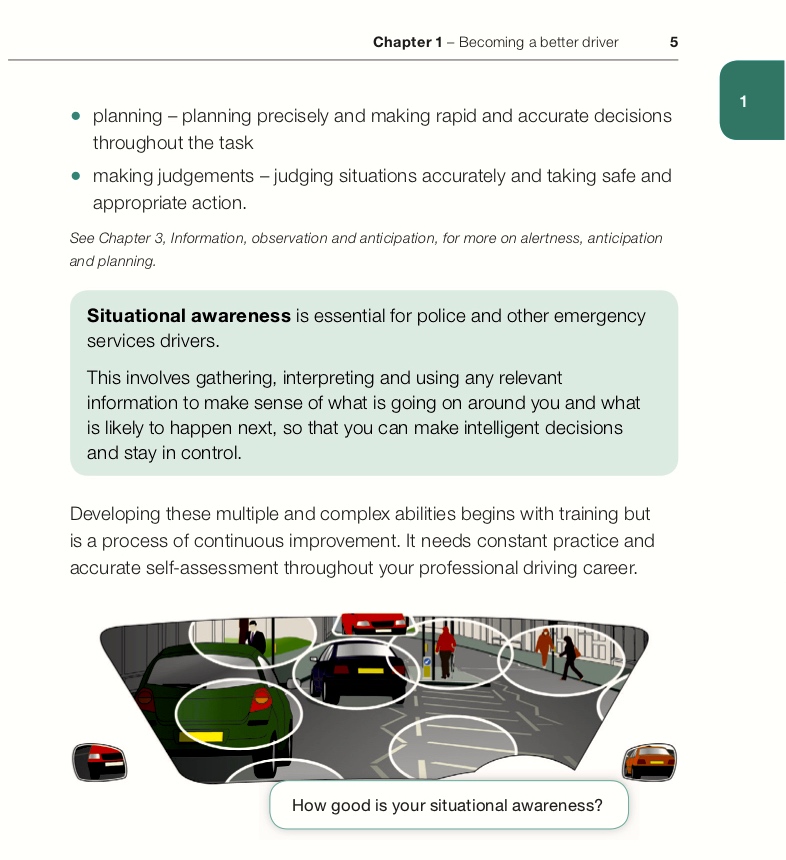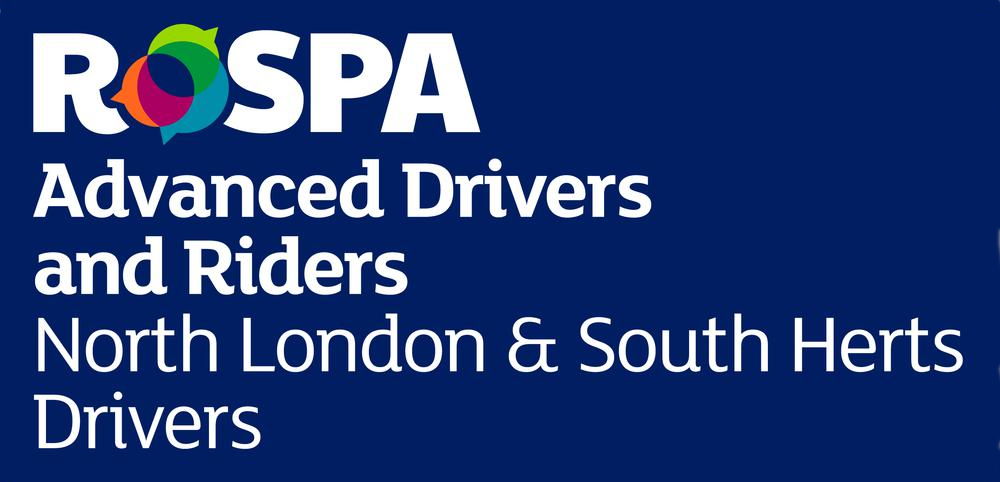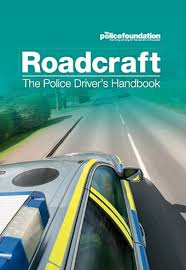Attitudes - I AM SAFE? - Chapter 1 Pages 2 - 22
I AM SAFE checklist Page 254:
-
Illness - Do I have an illness or symptoms that might affect my ability to drive?
-
Attitude - How do I feel about this journey? Am I fully focussed on the driving task? What human factors do I need to take account of?
-
Medication - Am I taking any medication that might affect my performance?
-
Sleep - Am I suffering from lack of sleep / fatigue?
-
Alcohol - Have I had a drink? Am I still affected by alcohol?
-
Food - Am I hungry or thirsty? Could low blood sugar or dehydration affect my judgement
-
Emotion - Am I angry, depressed or stressed? Could this lead me to take risks?
What makes a good driver?
Roadcraft in the 2017 edition suggest the qualities found in good drivers, those are:
-
Critical and honest self-awareness and understanding of your personal characteristics, attitudes and behaviour, which are necessary for safe driving
-
Taking action to keep identified risks to a minimum
-
Awareness of your own limitations and those of the vehicle and the road
-
Awareness of the risks inherent in a particular road and traffic situations
-
Concentration and good observation
-
Continuously matching the vehicle's direction and speed to the changing conditions
-
Skillful use of vehicle controls
The way you drive and conduct yourself on the road positively influences reciprocal behaviour from other motorists.
For example, a raised hand to thank someone for letting you pass or to apologise for making an error significantly reduces any ill will and increases a co-operative 'Flow' of traffic.

Take a 'Big Picture' view to reduce any feelings which can arise from the idea that your journey is in some way a priority (see pages 4 & 5 about competencies).
Your vulnerability as a dtiver
Most drivers think they are both safer and more skillful than the average driver - but we cannot all be right. In 2 out of 3 collisions human error is a cause. Driving safely is not an add-on extra - it must be built into the way you drive.
What are the commonest causes of collisions?
The commonest recorded causes of collisions in the UK are:
Driver error or reaction - this is a factor in 2 out of 3 collisions. The commonest errors are:
-
Failure to look properly
-
Failure to judge the other person's path or speed
-
Loss of control
Action based on poor judgement - this contributes to just over a quarter of all collisions. The main factors are:
-
Travelling too fast for the conditions
-
Exceeding the speed limit
-
Following too close
Being careless, reckless or in a hurry - is the next most common factor, contributing to around 1 in 6 collisions
Chapter 1 of Roadcraft provides many more illuminating examples of things which can affect your drive. It is essential that you begin to identify those risks which might apply to you.
Critical learning from experience
To become a better driver the first step is to recognise the resistance in ourselves to accepting responsibility. The second step is to accept every near miss and collision as a learning opportunity to decide how you can avoid the same mistake in the future.
It is irrelevant whether you believe another motorist is at fault - ASK 'What can I do differently?'
‘Diagrams and text from Roadcraft – The Police Rider’s Handbook, published 2013 by The Stationery Office (TSO) © Police Foundation copyright 2013. Reproduced with permission from the Police Foundation.’

